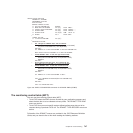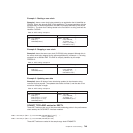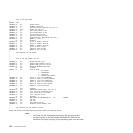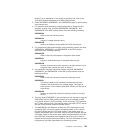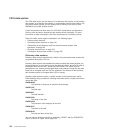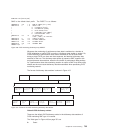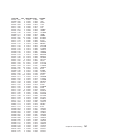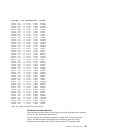CICS data section
The CICS data section can be made up of a dictionary data section, a performance
data section, an exception data section, or a transaction resource data section. You
can identify which of these you are dealing with by looking at the value of field
SMFMNCL in the SMF product section.
If data compression has been used, the z/OS Data Compression and Expansion
Services must be used to expand the data section before processing. For more
information on data compression, see Data compression for monitoring records.
Each of the data section types is described in the following topics:
v “Dictionary data sections”
v “Performance data sections” on page 761
v “Relationship of the dictionary record to the performance records: field
connectors” on page 762
v “Exception data sections” on page 764
v “Transaction resource data sections” on page 765
Dictionary data sections
Dictionary data sections describe all the fields in the performance data records that
are gathered during this CICS run.
Dictionary data sections describe all the system-provided data fields (whether you
have excluded any or not), plus any user-provided data fields, which CICS takes at
initialization time from the MCT entries you have coded. This means that the
descriptions of the system-provided data fields never change, though the user data
fields can be changed each time CICS is initialized. The contents of the dictionary
data sections cannot be changed while CICS is running.
Dictionary data sections contain a variable number of 26-byte dictionary entries.
Each dictionary entry provides the following information about a single performance
record data field:
CMODNAME
The identifier of the group to which the field belongs.
CMODTYPE
The field type.
CMODIDNT
The field identifier.
CMODLENG
The length of the field.
CMODCONN
The connector value assigned to the field.
CMODOFST
The offset of the field.
CMODHEAD
The informal name of the field.
You can map the dictionary entries by generating a DSECT with the DFHMCTDR
macro, as shown in Figure 106 on page 755.
754 Customization Guide




